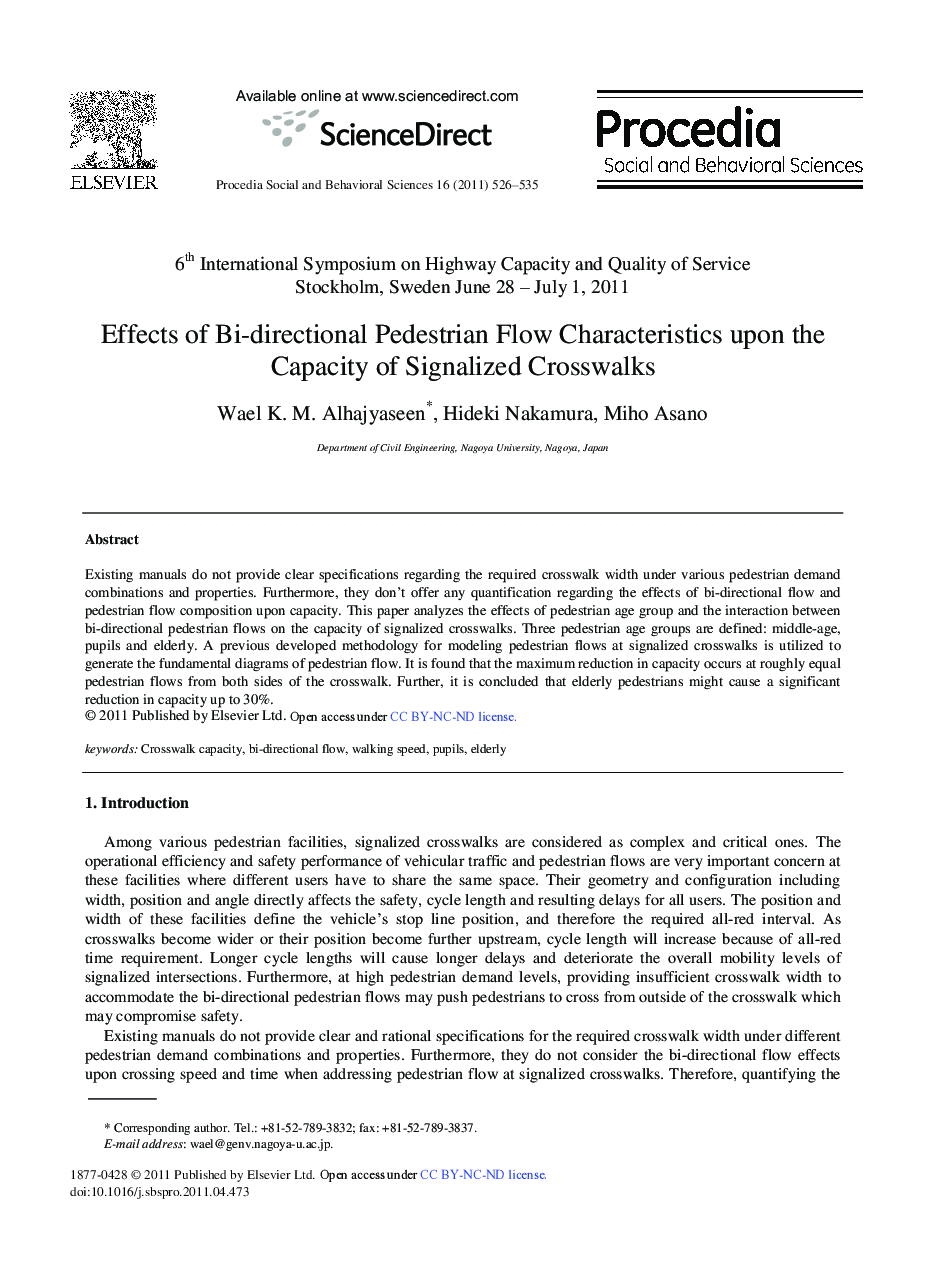| Article ID | Journal | Published Year | Pages | File Type |
|---|---|---|---|---|
| 1124184 | Procedia - Social and Behavioral Sciences | 2011 | 10 Pages |
Existing manuals do not provide clear specifications regarding the required crosswalk width under various pedestrian demand combinations and properties. Furthermore, they don’t offer any quantification regarding the effects of bi-directional flow and pedestrian flow composition upon capacity. This paper analyzes the effects of pedestrian age group and the interaction between bi-directional pedestrian flows on the capacity of signalized crosswalks. Three pedestrian age groups are defined: middle-age, pupils and elderly. A previous developed methodology for modeling pedestrian flows at signalized crosswalks is utilized to generate the fundamental diagrams of pedestrian flow. It is found that the maximum reduction in capacity occurs at roughly equal pedestrian flows from both sides of the crosswalk. Further, it is concluded that elderly pedestrians might cause a significant reduction in capacity up to 30%. © 2011 Published by Elsevier Ltd.
